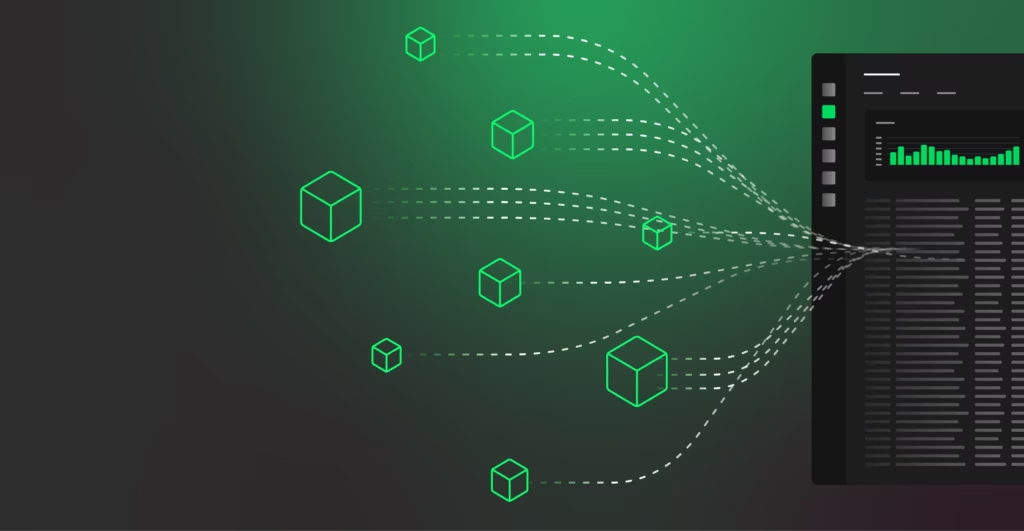Logging is an essential component of a distributed microservices architecture that helps record and monitor individual services’ actions. Microservices are made up of multiple independent services that interact. Logging is needed to understand system behavior across services and diagnose issues accurately.
Effective logging procedures are crucial in distributed and complex systems to maintain visibility, detect issues, and ensure reliability. In microservices, logging poses unique challenges due to its distributed nature of architecture. However, organizations can only handle such issues by implementing best practices.
Read on to learn more about the most effective and best practices for handling logging in microservices.
The Role of Logging in Microservices Monitoring
Microservices is a cloud application architecture that divides programs into independently deployable services. Every service runs independently and uses APIs to communicate with other services. This method offers scalability, flexibility, and resilience and is currently considered a best practice in application development.
Each microservice generates logs detailing request handling, error messages, and other essential events. These logs are crucial for diagnosing and resolving problems that may occur during operation and monitoring the microservices ecosystem’s health and performance.
Distributed logging in microservices monitors and documents actions within individual services. It gathers and stores the log data produced by microservices, which aids in tracking system activity, troubleshooting problems, and performing analyses.
Logging in microservices is an essential technique for efficiently managing and sustaining distributed architectures. It offers insight into system behavior, streamlines workflows, and facilitates troubleshooting.
Continue reading to find out more about the positive effects of logging in to your organization’s microservices architecture.
Logging in Microservices in a Nutshell
Logging in microservices involves generating and storing information about each microservice’s operation, including events, errors, and performance metrics. This data makes monitoring, debugging, and system performance optimization across distributed architectures easier.
Logging in Microservices: Common Challenges and How to Avoid Them
For microservices applications, logging enables behavior monitoring, identifies problems such as dropped requests or failures, and collects information for troubleshooting in the event of an issue.
While microservices logging is crucial for system observability, managing the logs is challenging due to their decentralized nature. The tedious log management process involves monitoring, storing, and analyzing log data produced by individual services in a distributed architecture.
If you’re wondering how to manage logs in microservices effectively, below are some of the challenges you can encounter in the process and how to navigate each one easily:
Correlation IDs
Error tracing in a RESTful microservice architecture can be challenging since it is managed by diverse teams in different time zones and companies. Without a correlation ID, developers would have to waste a lot of time and make mistakes trying to reconstruct a request’s path through the system.
A correlation ID is a unique identifier assigned to every transaction in distributed systems. It allows for logging-based tracking between various services, simplifying tracking and enabling error-free monitoring of request flow across the system by giving each request a unique identity.
Securing a correlation ID ensures that every request’s journey through the system is accurately recorded and readily available in logs. This makes debugging and issue resolution more effective.
RESTful Microservices Definition
RESTful microservices architecture is a modern software development method that uses more manageable, integrated services rather than a single, monolithic framework. With this approach, any service can be deployed independently to give separate teams control over the entire functionality.
Log Storage
Applications in a microservices architecture consist of several services, as they are frequently created with various technologies and programming languages. Consequently, logging becomes difficult because various services provide logs in various formats.
Utilizing a centralized storage for your logs is the key. Centralizing log storage simplifies security enforcement, backup, and maintenance as logs are combined into a single, accessible location.
Organizations can enjoy better security by combining logs from all services into a single centralized storage system. Doing so will allow businesses to enforce encryption, access limits, and other security measures against unauthorized access to and manipulation of log data.
Log Aggregation
One of the biggest challenges in microservices is managing logs from multiple services. It is more complex as different services use various formats to generate their logs.
However, with log aggregation, you can streamline collection by combining log data. This approach improves search, filtering, and analytics capabilities for effective monitoring and troubleshooting.
✅ Pro Tip
Make sure that aggregated logs retain important contextual data that helps link events with their respective microservices. This guarantees that combined logs offer meaningful information and facilitate prompt incident response to improve the dependability and efficiency of microservices-based operations.
Data Privacy Measures
There can be security and data privacy concerns if your logs include sensitive information, such as emails, social security numbers, or credit card numbers. It is necessary that logs are always safeguarded to prevent breaches and unauthorized disclosures.
This can include obfuscating this information from your log events. Additionally, access controls and encryption are crucial to limit access to authorized users only. These precautions protect log data against alteration and unauthorized access. Such security measures should be prioritized to preserve data confidentiality and integrity.
Why Logging is Essential for Microservices
The Benefits of Microservices
Logging is valuable for microservices to identify errors and comprehend the request flow. Meaningful logs with unique IDs are crucial for service correlation and error tracking. However, when business logic is spread across several microservices, logging becomes more complex, requiring special solutions.
Here are some of the benefits of microservices:
- Reduces Complexity: Breaks down programs into smaller, more manageable services, which expedites development and improves maintainability.
- Facilitates Flexibility: Promotes flexibility in technology adoption by letting developers select the best technologies for each service.
- Enables Dedicated Teams: Allows specialized teams to build each service, encouraging focus and agility independently.
- Allows Independent Scaling: This enables each service to scale independently, improving performance and resource utilization.
- Supports Independent Deployment: Allows for the autonomous deployment of every service, making it possible for complicated applications to be deployed continuously.
The Best Practices for Logging in Microservices
Logging is necessary in applications, whether they are microservices-based or monolithic. However, due to the complexity of the microservices design, best practices must be followed for optimal app performance:
- Structured Logging: Use structured logging formats like JSON instead of plain text logs. Structured logs make it easier to search, filter, and analyze log data across multiple services.
- Consistent Log Formatting: Establish a consistent log format across all your microservices to streamline analysis across teams and systems. This includes defining common fields such as timestamp, service name, log level, request ID, and other relevant metadata.
- Log Levels and Categorization: Define and use appropriate log levels — FAIL, ERROR, WARN, INFO, and DEBUG — to denote the severity or importance of log events.
- Context Information: Include relevant context information in your log messages, such as user IDs, request parameters, or application-specific data. You can also enrich logs with information from third-party systems. This additional context can aid in troubleshooting and root cause analysis.
- Sensitive Data Handling: Use an observability pipeline or other mechanisms to to mask or obfuscate sensitive data, like social security numbers and emails, from your log messages. Doing so can help you maintain data privacy and comply with regulations.
- Data Pre-Processing: Microservices architectures generate massive volumes of log data. In order to maintain performance, reduce mean-time-to-detection (MTTD), and control costs, teams ought to pre-process log data as it’s created. This practice helps you centralize the right data in the right shape and identify “needles in the haystack” upstream.
Conclusion
Logging is indispensable for maintaining system integrity and operational excellence in microservices. A robust logging strategy lets businesses monitor and manage their infrastructure effectively to ensure seamless operations and long-term success.
Additionally, comprehensive logging aids in troubleshooting and enhances reliability through alerting and anomaly detection. Long-term log retention can also help you support compliance and meet regulatory requirements. As microservices evolve, adopting effective logging techniques will become even more crucial to maintain a competitive edge in a fast-paced technological environment.
Logging in Microservices FAQs
How do you monitor logs in microservices?
There are various ways to monitor your logs. It includes collecting logs, centralizing them in a log management tool, creating log-based dashboards, and correlating your logs to alerts.
What are the three commonly used tools for microservices?
The most popular messaging tools include Edge Delta, RabbitMQ, Amazon Simple Queue Service, and Apache Kafka.
Do all microservices have an API?
Microservices are about the architecture and design of an application, and they can be built with or without a RESTful API.






